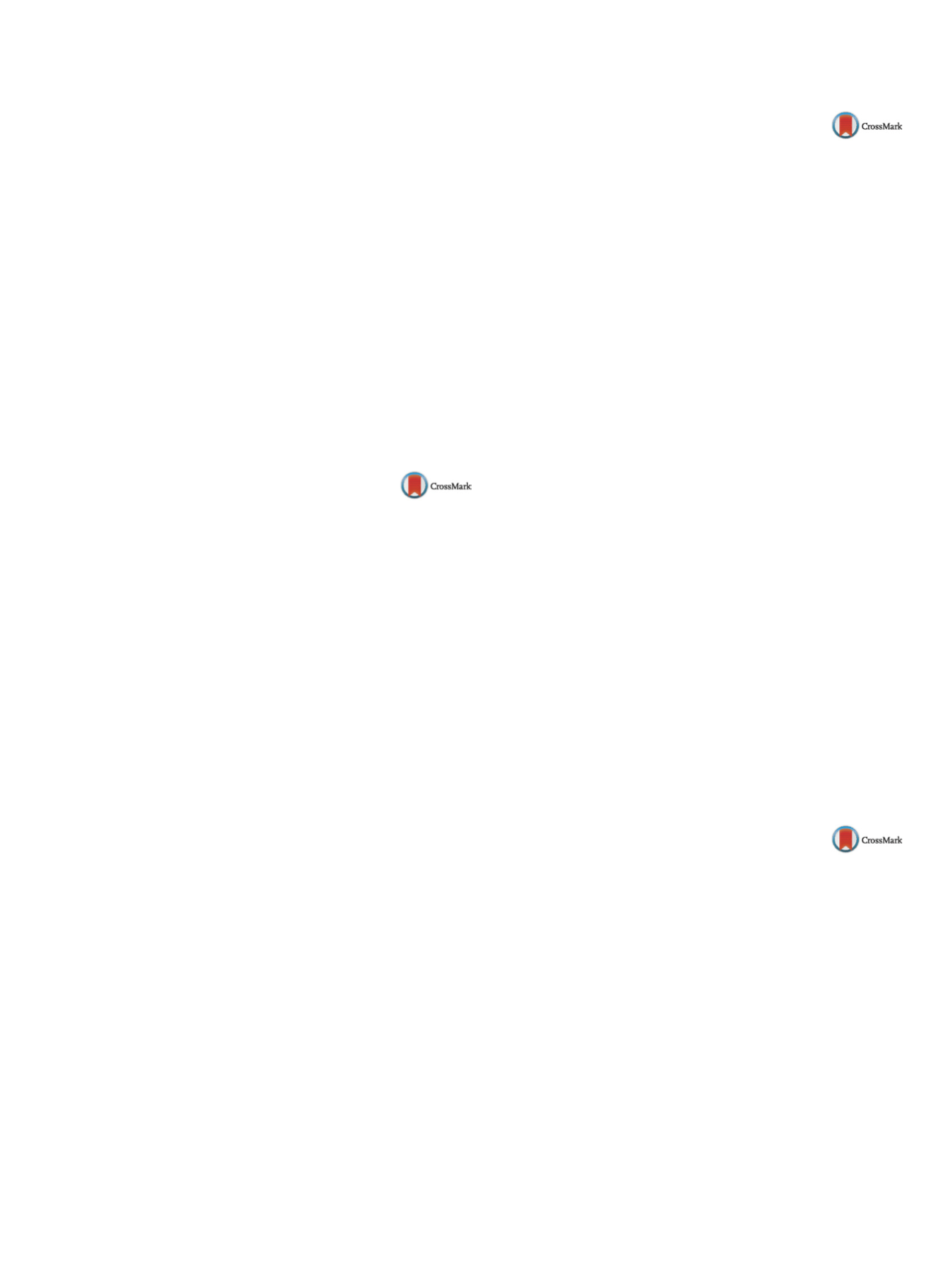

25th European Congress of Psychiatry / European Psychiatry 41S (2017) S710–S771
S747
disorder (CDC,
n
= 30, experimental group), dysthymic disorder
(DDC,
n
= 30, control group), and normal (NC,
n
= 30, control group),
by applying the newfive factor inventory, and children’s perception
of their fathers on the parent–child relationship scale.
Method
The children were matched on age, sex, socio-economic
status and other relevant variables. The CD and DD were selected
on the DSM-IV criteria for the diagnosis of conduct disorder and
dysthymic disorder. The fathers of each group of children were
administered the aforesaid questionnaires.
Result
The CDF showed only significantly poor agreeableness
compared to the NF. The CDC’s perceived their fathers most nega-
tively compared to the DDC and NC. The CDF’s conscientiousness
was significantly correlated to a number of variables of the chil-
dren’s perception of them as observed on the PCRS.
Conclusion
The CDF showed lower agreeableness than the NF.
The CDC perceived their fathers most negatively, hence, setting
the model for the child to observe and learn socially inappropriate
behavior.
Disclosure of interest
The author has not supplied his/her decla-
ration of competing interest.
http://dx.doi.org/10.1016/j.eurpsy.2017.01.1384EV1055
Films and fiction leading to onset of
psycho-phenomenology: Case reports
from a tertiary mental health center,
India
S. Soman
1 ,∗
, J. Parameshwaran
1, J. KP
21
Mental Health Centre, psychiatry, Thiruvananthapuram, India
2
Government Medical College, Psychiatry, Thiruvananthapuram,
India
∗
Corresponding author.
Mind is influenced by socio-cultural religious belief systems,
experiences and attributions in the development of psychophe-
nomenology. Film viewing is a common entertainment among
young adults.
Objectives
Influence of repetitive watching of films of fiction and
horror genres on onset phenomenology in young adults.
Method
Two case reports on onset of psychotic features and
mixed anxiety depressive phenomenology were seen in two
patients aged 16 and 20 years respectively and based on the fan-
tastic imagination created by films. The 28-year-old female patient
diagnosed with schizoaffective disorder had onset at 16 years of
age and the course of phenomenology was influenced by the fiction
movie ‘Jumanji’ with partial response to medications over 10 years.
The depressive and anxiety symptoms of less than 6months dura-
tion of a 20-year-oldmale patient was influenced by film ‘Hannibal’
and responded to antidepressant and cognitive behavior therapy.
Conclusions
Horror and fiction films can influence the thinking
patterns and attribution styles of a young adult by stimulating fan-
tasy thinking which if unrestrained can lead to phenomenology.
Viewing films compulsively, obsessive ruminations on horror and
fictional themes can lead to onset of psychopathology of both psy-
chosis and neurotic spectrum. Further research on neurobiological,
psychological correlates is needed. Parental guidance and restricted
viewing of horror genre films with avoidance of repeated stimula-
tory viewing of same genre movies in children, adolescents, young
adults and vulnerable individuals is required.
Disclosure of interest
The authors have not supplied their decla-
ration of competing interest.
http://dx.doi.org/10.1016/j.eurpsy.2017.01.1385EV1056
Behavioral addictions and the
associated mental health issues and
psychopathology
V. Starcevic
University of Sydney, Sydney Medical School Nepean, Discipline of
Psychiatry, Penrith, Australia
Introduction
Behavioral addictions are conceptually controver-
sial and their relationship with mental health problems and
psychopathology is poorly understood.
Objectives
To review the relationships between personality
traits, mental health issues and mental disorders on one hand
and several behavioral addictions on the other. The latter include
problematic Internet use, Internet gaming disorder, hypersexual
disorder/compulsive sexual behavior disorder, compulsive buying
and exercise addiction.
Methods
Literature review and conceptual synthesis.
Results
Mental health issues, personality dimensions and
mental disorders are commonly associated with behavioral
addictions. Although some relatively specific associations were
found (e.g., between Internet gaming disorder and attention
deficit/hyperactivity disorder, between compulsive buying and
pathological hoarding and between exercise addiction and eating
disorders), the specificity of most associations was low. Most stud-
ies were cross-sectional and the direction of causality, if any, was
uncertain. Therefore, it is unknown under what circumstances cer-
tain mental health issues predispose to the particular behavioral
addiction or represent a primary problem and when they are a
consequence of behavioral addictions. This reviewalso underscores
the importance of distinguishing between certain behavioral addic-
tions and overlapping conditions, e.g., between compulsive buying
and bipolar disorder (mania/hypomania).
Conclusions
These findings suggest that proper conceptual-
ization of behavioral addictions as distinct conditions or a
manifestation of an underlying psychopathology will have to await
results of the prospective studies. In the meantime, there are impli-
cations for treatment in terms of the importance of identifying and
addressing the underlying or associated mental health problems in
individuals with behavioral addictions.
Disclosure of interest
The author has not supplied his/her decla-
ration of competing interest.
http://dx.doi.org/10.1016/j.eurpsy.2017.01.1386EV1057
The role of personality and trait
affectivity on delusional ideation
M. Tonna
∗
, F. Paglia , R. Ottoni , P. Ossola , C. De Panfilis ,
C. Marchesi
University of Parma, Neuroscience, Parma, Italy
∗
Corresponding author.
Objective
The relationship between personality and delusional
ideation in still debated. The present study was aimed to evaluate
the role of personality features and trait affectivity on the severity
of delusional beliefs, through the lens of a dimensional approach. In
fact, robust evidence suggests that delusional experience presents
a dimensional structure rather than an all-or-nothing fashion with
a severity gradient of delusional beliefs from general population to
full-blown delusional disorder (DD).
Method
Forty-nine inpatients affected by DD and 42 non-
delusional outpatients were administered the structured interview
for DSM-IV Personality Disorders, the Pathological Narcissism
Inventory–Italian Version, the Positive and Negative Affect Sched-
ule and the Peters et al. 33–Italian version.
Results
Severity of delusional ideation was positively related to
“hiding the self” (HS) domain of narcissistic vulnerability and to
paranoid traits and negatively related to “positive affect” (PA). Para-


















